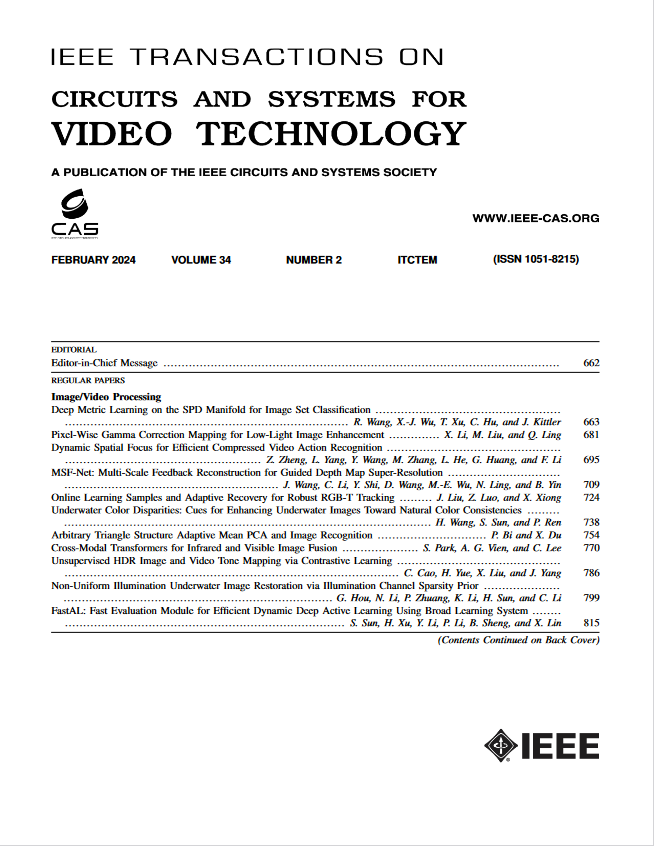DPMNet: A Remote Sensing Forest Fire Real-Time Detection Network Driven by Dual Pathways and Multidimensional Interactions of Features
IF 8.3
1区 工程技术
Q1 ENGINEERING, ELECTRICAL & ELECTRONIC
IEEE Transactions on Circuits and Systems for Video Technology
Pub Date : 2024-09-17
DOI:10.1109/TCSVT.2024.3462432
引用次数: 0
Abstract
A fundamental challenge in remote sensing-based forest fire detection lies in accurately discerning fire characteristics on various scales against the backdrop of intricate and heterogeneous forest landscapes. In response to this challenge, we propose a dual-path network (DPMNet) with multidimensional feature interaction for real time remote sensing forest fire detection. Initially, a dual-path backbone network is designed, integrating coarse-grained and fine-grained parallel pathways, working in tandem to capture both global visual features and nuanced local texture details. Subsequently, we develop the Multidimensional Interactive Feature Pyramid Network (MiFPN), a novel structure that amalgamates information streams from varied levels through a three-branch structure and engenders profound fusion and dynamic interaction of features across multiple scales. Thereafter, the Context-Enriched Adaptive Fusion Module (CEAFM) is proposed, which emerges to meticulously blend macroscopic visual elements harvested via coarse-grained conduits, employing a multi-faceted pathway strategy to bolster the model’s overarching comprehension and precision in forest fire detection. Finally, the Enhanced Contextual Pooling Bottleneck (ECPB) is put forward, an integration that augments the model’s spatial perception and contextual acumen through the incorporation of dilated convolution and global pooling techniques. Extensive experiments are conducted on the remote sensing forest fire dataset in order to confirm the efficacy of DPMNet. The experimental results demonstrate that our DPMNet achieves satisfactory performance in terms of real-time performance as well as accuracy and provides an effective solution for real-time detection of remote sensing forest fires based on UAVs.DPMNet:由双重途径和多维交互特征驱动的遥感林火实时探测网络
本文章由计算机程序翻译,如有差异,请以英文原文为准。
求助全文
约1分钟内获得全文
求助全文
来源期刊
CiteScore
13.80
自引率
27.40%
发文量
660
审稿时长
5 months
期刊介绍:
The IEEE Transactions on Circuits and Systems for Video Technology (TCSVT) is dedicated to covering all aspects of video technologies from a circuits and systems perspective. We encourage submissions of general, theoretical, and application-oriented papers related to image and video acquisition, representation, presentation, and display. Additionally, we welcome contributions in areas such as processing, filtering, and transforms; analysis and synthesis; learning and understanding; compression, transmission, communication, and networking; as well as storage, retrieval, indexing, and search. Furthermore, papers focusing on hardware and software design and implementation are highly valued. Join us in advancing the field of video technology through innovative research and insights.

 求助内容:
求助内容: 应助结果提醒方式:
应助结果提醒方式:


